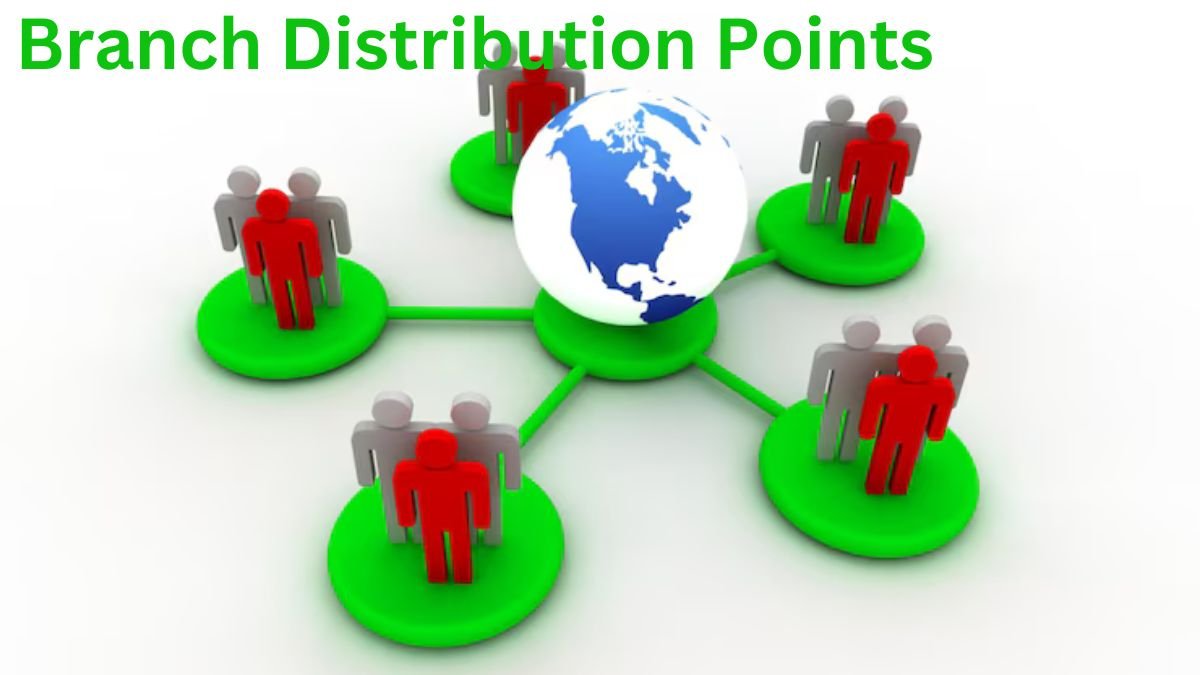BDPs serve as pivotal nodes in the distribution network, facilitating efficient movement of goods and services while enabling businesses to expand their reach and accelerate growth. This article delves into the significance of BDPs, their role in linking networks, and how they empower organizational growth.Understanding Branch Distribution Points Branch Distribution Points, often abbreviated as BDPs, are strategically located hubs within a distribution network. These points serve as intermediaries between production facilities, warehouses, and end consumers, playing a critical role in ensuring the smooth flow of goods and services. BDPs are characterized by their central positioning, allowing for optimal reach and accessibility to various regions.
Key Functions of BDPs
Consolidation: BDPs consolidate products from multiple sources, streamlining the distribution process and reducing transportation costs.
Distribution: They serve as distribution centers, efficiently routing products to their intended destinations based on demand and logistical considerations.
Inventory Management: BDPs play a vital role in inventory management, optimizing stock levels to meet customer demands while minimizing holding costs.
Value-Added Services: Some BDPs offer value-added services such as labeling, packaging, and customization, adding flexibility and enhancing customer satisfaction.
Data Analytics: Leveraging advanced analytics, BDPs provide valuable insights into supply chain performance, demand forecasting, and market trends, enabling informed decision-making.
The Role of BDPs in Linking Networks BDPs acts as the linchpin that connects various nodes within a distribution network. By serving as intermediary hubs, they facilitate seamless coordination between suppliers, manufacturers, retailers, and end consumers. Through efficient transportation routes and optimized logistics, BDPs ensure timely delivery of products while minimizing delays and disruptions. Moreover, BDPs enable businesses to tap into new markets and expand their geographic footprint, fostering network connectivity and enhancing market penetration.
Empowering Growth through BDPs
Market Expansion: BDPs enable businesses to penetrate new markets and reach untapped customer segments, driving revenue growth and market share expansion.
Scalability: By leveraging the infrastructure and capabilities of BDPs, businesses can scale their operations rapidly to meet growing demand and adapt to changing market conditions.
Efficiency Gains: BDPs streamline the distribution process, resulting in cost savings, improved resource utilization, and enhanced operational efficiency.
Competitive Advantage: Organizations with well-established BDPs gain a competitive edge by offering faster delivery times, superior service quality, and greater market responsiveness.
Innovation Hub: BDPs serve as hubs for innovation and collaboration, fostering the exchange of ideas, technologies, and best practices among stakeholders within the network.
Case Study:
Amazon Fulfillment Centers One of the most prominent examples of BDPs in action is the extensive network of Amazon Fulfillment Centers (FCs). These strategically located facilities serve as BDPs for the e-commerce giant, enabling it to fulfill orders quickly and efficiently. By leveraging advanced robotics, automation, and data analytics, Amazon FCs optimize the storage, picking, and packing processes, ensuring fast and reliable delivery to customers worldwide. The extensive network of FCs plays a pivotal role in Amazon’s growth strategy, allowing it to expand its product offerings, enter new markets, and deliver unparalleled customer experiences.
Challenges and Considerations
While BDPs offer numerous benefits, they also pose certain challenges and considerations for businesses:
Infrastructure Investment: Establishing and maintaining BDPs requires significant upfront investment in infrastructure, technology, and resources.
Regulatory Compliance: BDPs must adhere to regulatory requirements and compliance standards, which vary across regions and industries.
Supply Chain Risks: BDPs are susceptible to supply chain disruptions, including natural disasters, geopolitical events, and labor strikes, which can impact operations and logistics.
Technological Integration: BDPs must integrate advanced technologies such as IoT, AI, and blockchain to enhance visibility, transparency, and efficiency across the supply chain.
Environmental Sustainability: As environmental concerns rise, BDPs face pressure to adopt sustainable practices and reduce their carbon footprint through green logistics initiatives.
Expanding Role of Technology
BDPs In today’s digital era, technology plays a pivotal role in transforming BDP operations and enhancing their effectiveness. Several technological advancements are reshaping the landscape of distribution networks, including:
Internet of Things (IoT): IoT devices such as sensors and RFID tags provide real-time visibility into inventory levels, shipment status, and environmental conditions, enabling proactive decision-making and predictive maintenance.
Artificial Intelligence (AI): AI algorithms analyze vast amounts of data to optimize routing, scheduling, and resource allocation, improving efficiency, and reducing operational costs.
Blockchain: Blockchain technology enhances transparency and traceability across the supply chain, ensuring the integrity of transactions and mitigating the risk of counterfeit goods and fraud.
Robotics and Automation: Robotics and automation systems automate repetitive tasks such as picking, packing, and sorting, increasing throughput, and reducing labor costs while improving accuracy and reliability.
Predictive Analytics: Predictive analytics models forecast demand patterns, market trends, and supply chain risks, enabling proactive planning and optimization of BDP operations.
By harnessing the power of these technologies, BDPs can streamline their processes, enhance visibility and control, and deliver superior customer experiences in an increasingly competitive marketplace.
Future Trends and Opportunities
Looking ahead, several trends and opportunities are poised to shape the future of BDPs:
E-commerce Growth: The continued expansion of e-commerce is driving demand for BDPs capable of handling high volumes of online orders, same-day delivery, and reverse logistics.
Last-Mile Solutions: Innovations in last-mile delivery, such as autonomous vehicles, drones, and micro-fulfillment centers, present opportunities to enhance the speed and efficiency of BDP operations.
Sustainable Practices: Growing awareness of environmental sustainability is prompting BDPs to adopt eco-friendly initiatives such as renewable energy, electric vehicles, and recyclable packaging.
Globalization: The globalization of supply chains is creating opportunities for BDPs to expand their reach across international borders and tap into emerging markets with growing consumer demand.
Collaborative Networks: Collaborative networks and partnerships between BDPs, suppliers, and logistics providers are becoming increasingly prevalent, enabling shared resources, expertise, and infrastructure to drive efficiencies and economies of scale.
conclusion
Branch Distribution Points (BDPs) play a vital role in linking networks, empowering businesses to optimize their operations, expand their reach, and accelerate growth. By leveraging advanced technologies, embracing innovation, and adapting to emerging trends, BDPs can remain agile and resilient in an ever-changing business landscape. As businesses continue to evolve and innovate, BDPs will remain at the forefront of supply chain management, driving efficiency, agility, and competitiveness in the global marketplace.
Read More: Dynamics of Property Rentals Understanding the Roles of Lessor vs Lessee





